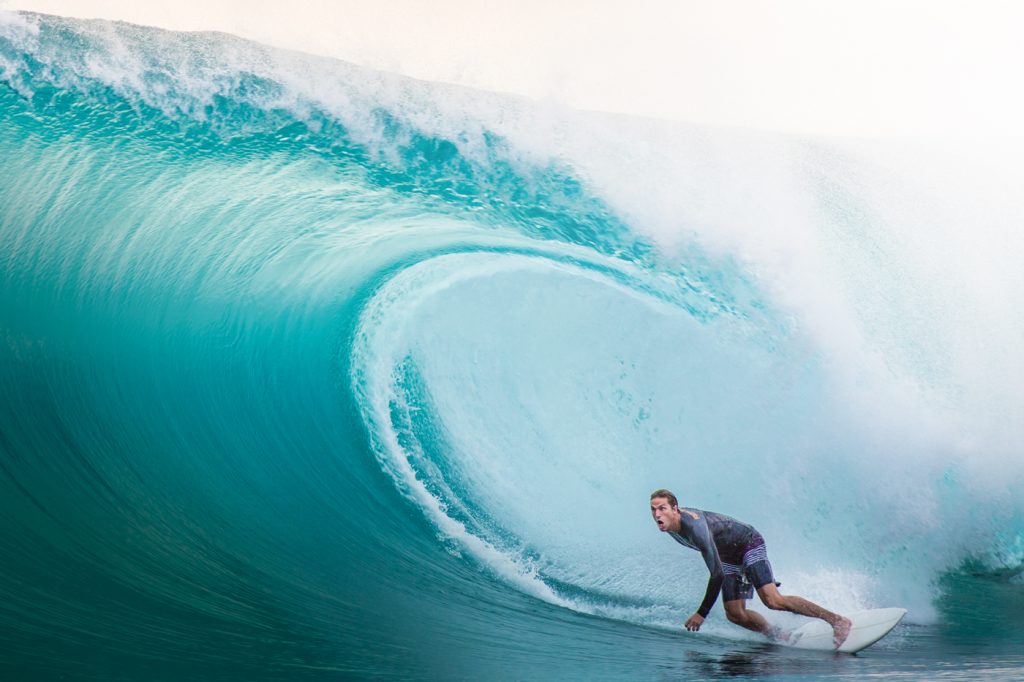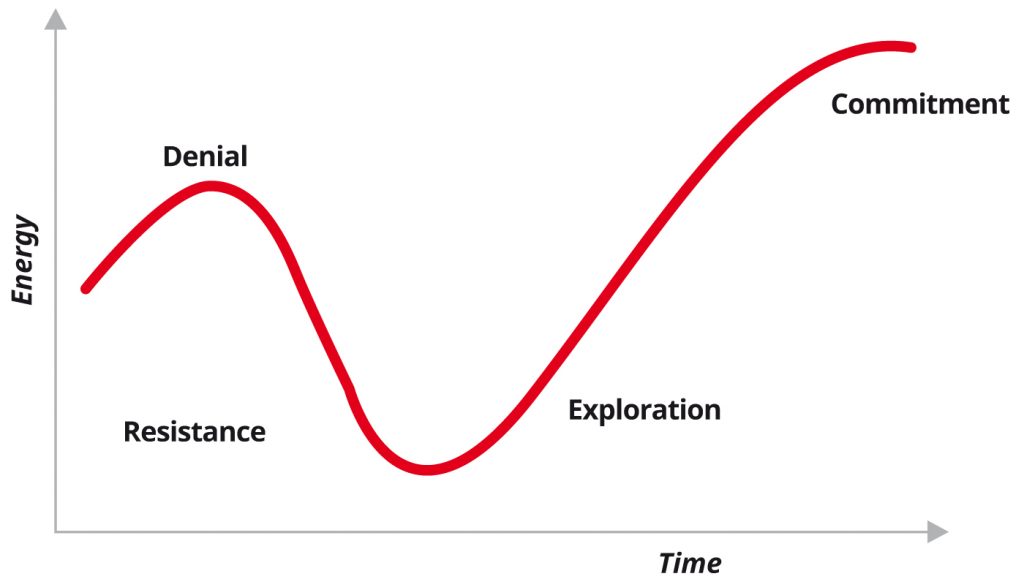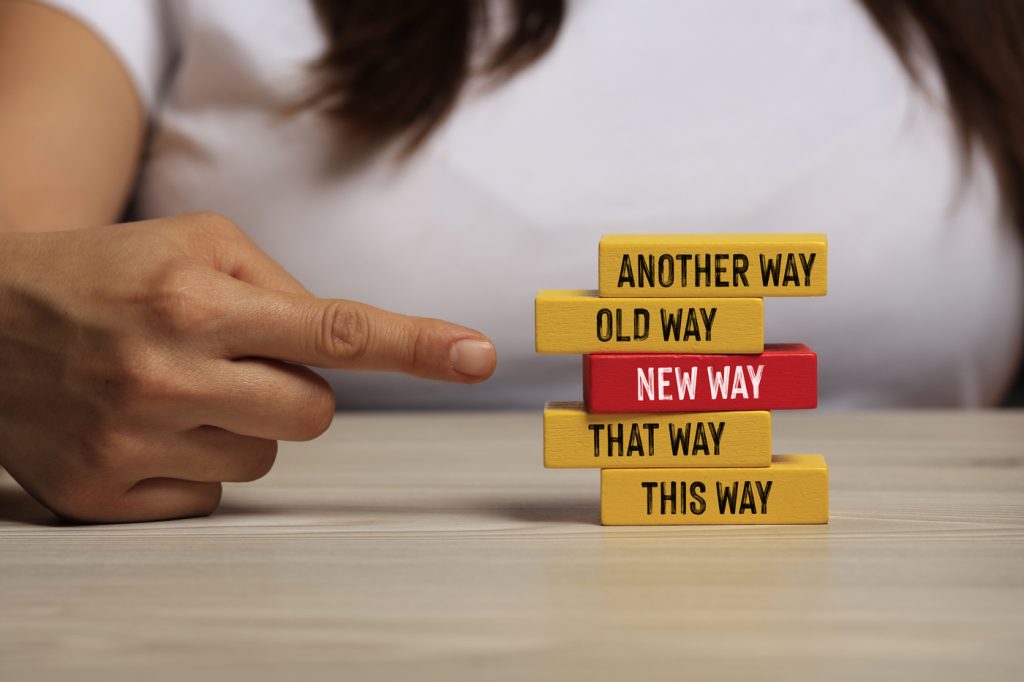Change And The Fast And Furious Future
Prepare to surf the waves of change coming your way.

By Derek Ariss
Welcome to an incredible time of change! In previous articles, I have stated that technology drives the rate of change at an ever-increasing speed. Now I am saying that technology and environmental shifts are creating change faster than before!
Everywhere we look, there are modifications, alterations, and adjustments going on. Governments are shifting, the ‘New Normal’ created by Covid impacts how we work, travel, transact, and communicate. Underlying all of this is still the theme of digital technologies.
How do we manage? What are our coping tools to steer through this ever faster-paced future? We want to be able to come out of this positive, refreshed, and in control.
In this article, we will present a cross-section of information by examining change. We will look at how we react to change, and how we can improve the reaction. In addition, we will present the skills we need to develop and make riding the wave of change positive, productive, and exciting.
The other day I was mesmerised by a simple photograph. It was a picture of a beautiful and massive wave that was hurtling towards a nearby coastline. It wasn’t the wave that caught my attention as much as the small figure near the bottom. The figure was a surfer riding the wave. Even though the wave was huge, powerful, and overwhelming, the surfer decided to harness its energy and use it to create the ride of a lifetime.
This picture represented to me the present. It is a time of adjustments, reinvention, and resilience, which we all need to pass through. Whether it is applying artificial intelligence in our business, the impact of automation on our supply chains, or even the social impact of working from home, the new wave is here. We need to deal with it well. Just like the surfer in the photo, we need to harness the power of the ‘wave of change’ and deliver a great ride through it.

The study of how people deal with change has been a point of interest for a long time. One of my preferred structures explaining how people deal with massive shifts in their lives comes from the psychologist Elizabeth Kubler-Ross. In 1969, she created a model which describes the behavioural stages that people go through when they lose something important and meaningful. We all go through these stages when dealing with significant change. Let’s take a closer look (see Chart 1).
> Stage 1: Denial. When a person realises that change has happened, they often believe that the situation they are going through is not really occurring. People in this first stage hope that the situation will just go away. Here, people need time to process the information. It’s a little bit like an ostrich burying its head in the ground because it is frightened. The ostrich thinks if it ignores the cause of the fear, it will then disappear.
> Stage 2: Resistance. In the next stage, known as the ‘resistance’ stage, a person realises that the change is real. Denial is no longer possible. They need to accept the circumstances, but they feel they have lost something that they are comfortable with. Often, here, people get slightly irritated and angry. They become upset because the future is unclear.
> Stage 3: Exploration. In Stage 3, the person reaches a point where getting angry will not make the situation any better. They start examining and testing out possibilities.
> Stage 4: Commitment. The final stage of the model is called ‘commitment’. This stage occurs once the person has accepted the ‘New Normal’. When people reach this stage in the cycle, they become more forward thinking, confident, and engaged. It is here where people start learning, growing, and seeing the change as positive.
Hence, if there is a meaningful change, be it learning a new operating system, applying a digital transformation programme, or even utilising video conferencing as a primary communication source, people must go through all four stages.
Understanding that all of us need go through these stages once any major change happens is important. We all take different amounts of time to pass through Stages 1 to 4. This explains why we see people at different stages in the change cycle as we all adjust to the ‘New Normal’ in the world.
You may be asking, “Is there a way of minimising the negative effects of the change cycle?” Yes there is, and one potential answer lies in a New York Times bestselling book called Who Moved My Cheese.
Dr Spencer Johnson was a physician and author, who wrote a series of books on management and change. His most popular book, a New York Times bestseller, is called, Who Moved My Cheese.
The book is a parable that discusses how to deal with change in work and in your personal life. It anchors around the pursuit of ‘cheese’ (things that make you happy in your life). The story takes place in a maze and the four characters that are living in it. They are constantly looking for ‘cheese’.

Each character in the story represents qualities within us.
+ Sniff is continually looking for new change and is ready for it;
+ Scurry goes into action immediately without needing to know all the information;
+ Hem likes to stay in a safe and familiar territory; and
+ Haw is slow to adapt to change but willing to learn.
The story’s summary: Each day all four characters run into the maze and look for ‘cheese’. Sometimes, they find ‘cheese’ in parts of the maze; other times, they don’t find ‘cheese’. In either case, they always seem to survive.
One day Sniff, Scurry, Hem, and Haw all find a location with a lot of ‘cheese’.
There is so much ‘cheese’ in fact, that they don’t have to keep searching every day. This is where things get interesting because the characters react differently to one another.
Sniff and Scurry still keep looking for new ‘cheese’ every day.
Hem and Haw count on their past experiences and don’t worry about looking for new ‘cheese’.
Over time, however, the ‘cheese’ supply slowly diminishes (we can all relate to this).
The story then focuses on how each of the characters reacts to and manages the change.
Sniff and Scurry did well; they kept adapting to changes. Haw, who was slow at dealing with change, eventually accepted the change, and learned from Sniff and Scurry. Haw went back out to the maze and started finding new ‘cheese’ again.
Hem, who liked things to be safe and stable, got increasingly frustrated and unhappy. He never got new ‘cheese’.
In our lives, we realise that as change happens often, we need to deal with it proactively and positively. Who Moved My Cheese reminds us of how to apply this realisation. The story highlights that change is inevitable and that we need to be prepared for it to happen by monitoring our environment. When the time is right we need to adapt and leap into action quickly.
I often see successful organisations applying the principles of Who Moved My Cheese.
For example, I recently attended an interview hosted by Singapore’s Institute of Banking and Finance (IBF) titled Emerging stronger from COVID-19 Co-Creating Opportunities for our workforce in October.
The event was an interview with Mr Tharman Shanmugaratnam, Senior Minister and Coordinating Minister for Social Policies, Chairman of MAS, and National Jobs Council; and Mr Samuel Tsien, Group CEO, OCBC Bank, Vice-Chairman of IBF Council, and Member of National Jobs Council, to discuss the future of jobs, skills, careers, and personal insights on how organisations can transform and develop their talent to meet future challenges.
It was also a discussion on how change is being dealt with in the financial sector.
For me, two quotes from the minister illustrated the application of the Who Moved My Cheese principles.
One quote discussed how to change across the financial services industry was being anticipated; Mr Shanmugaratnam stated that the government would,
“Work pre-emptively with employers and with firms. First,” to “know what jobs are likely to become redundant and what new jobs are being created.” They would then “Work pre-emptively to create new jobs and train people for new jobs.”
The second quote addressed the need to be prepared for change by monitoring training requirements and delivering the training requirements quickly.
“We have to customise training a lot more. Through our six-monthly surveys, we are going to be able to get to a very granular level of the nature of the jobs being created, the specific skills required, and then we can look at individuals in the same customised fashion. What do they already have, what is transferable, and what needs to be added to their skills toolkit.”
It is this application of the principles that will encourage the continued positive management of change.

Connected with understanding and adapting to change is the need to develop a set of critical skills within ourselves and teams. Tony Wagner is an American educational specialist, a Senior Fellow at the Learning Policy Institute. Tony has interviewed leaders in industry, in education, as well as the armed forces, to identify their thoughts on skills needed by the workforce in the future.
Interestingly, across all sectors and industries, the following skills sets were consistently identified as important areas of educational development for the future
When I review this list, these skills make sense. In a time of constant change, we will need capabilities that allow us to question, review, adjust, learn, and assess continuously.
Anyone developing these skills will be more than prepared to surf with any of the large waves of change coming their way.
Derek Ariss is Head of Innovation Education at Lightbulb Capital and is responsible for building the education practice, focusing on creativity, design thinking, technology, culture, and mindset conducive to innovation in finance. Derek also teaches part of the Singapore Management University (SMU) Certificate in FinTech and Innovation course and an Innovation Culture Catalyst course at SMU. He holds an MBA in International Marketing and Strategy and Bachelor of Commerce (Hons) from the University of Windsor, Canada, and a Bachelor of Science in Psychology and Biology.